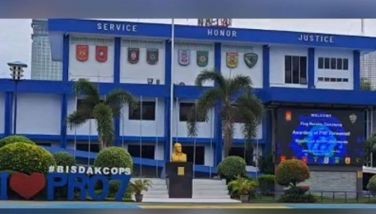DOH stand on dengue assailed
August 13, 2005 | 12:00am
Mayor Tomas Osmeña yesterday described as counter-productive the Department of Health's statement the other day that Cebu City cannot be placed under a state of calamity based on their requirements.
"We are headed to a very dangerous and unsafe situation...it should not be counting dead bodies before we start moving," Osmeña said.
The DOH, through National Epidemiology Center director Enrique Tayag, told the City Council that Cebu City is only at "alert threshold", and not under a state of calamity because the current number of dengue cases does not reach 20 percent of the city's total population.
Under DOH standards, an area can be declared under the state of calamity if 20 percent of its population is affected by a disaster. In Cebu, 20 percent is equivalent to around 140,000 residents.
"We want people to be alarmed...this is a much more dangerous thing than the impeachment proceedings," Osmeña said.
The deadly dengue virus has already claimed 19 people while affecting around 600 others in the city. The DOH identified barangays Lahug, Guadalupe and Tisa as places with the most number of breeding sites of the dengue-causing mosquitoes.
Osmeña believes it is necessary to alarm the people because of their heedless attitude to take the necessary steps to combat the disease, reiterating that some residents cannot even cover containers with water in their houses so mosquitoes cannot breed.
"The problem is not solved because people don't care," Osmeña said.
The DOH also said what is alarming in Cebu and the rest of the region is the fact that there are more deaths this year compared to last year vis-à-vis the number of those affected by the virus.
But the DOH said it understood why the Cebu City Disaster Coordinating Council recommended that the city be declared under the state of calamity, as it based its move on the Local Government Code. - Joeberth M. Ocao
"We are headed to a very dangerous and unsafe situation...it should not be counting dead bodies before we start moving," Osmeña said.
The DOH, through National Epidemiology Center director Enrique Tayag, told the City Council that Cebu City is only at "alert threshold", and not under a state of calamity because the current number of dengue cases does not reach 20 percent of the city's total population.
Under DOH standards, an area can be declared under the state of calamity if 20 percent of its population is affected by a disaster. In Cebu, 20 percent is equivalent to around 140,000 residents.
"We want people to be alarmed...this is a much more dangerous thing than the impeachment proceedings," Osmeña said.
The deadly dengue virus has already claimed 19 people while affecting around 600 others in the city. The DOH identified barangays Lahug, Guadalupe and Tisa as places with the most number of breeding sites of the dengue-causing mosquitoes.
Osmeña believes it is necessary to alarm the people because of their heedless attitude to take the necessary steps to combat the disease, reiterating that some residents cannot even cover containers with water in their houses so mosquitoes cannot breed.
"The problem is not solved because people don't care," Osmeña said.
The DOH also said what is alarming in Cebu and the rest of the region is the fact that there are more deaths this year compared to last year vis-à-vis the number of those affected by the virus.
But the DOH said it understood why the Cebu City Disaster Coordinating Council recommended that the city be declared under the state of calamity, as it based its move on the Local Government Code. - Joeberth M. Ocao
BrandSpace Articles
<
>
- Latest
- Trending
Trending
Latest



















